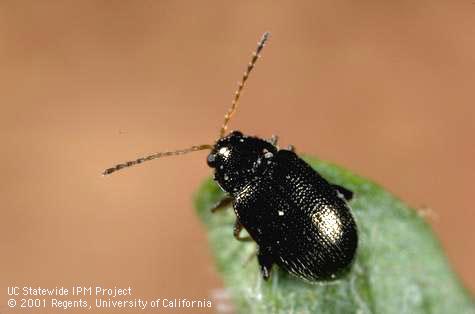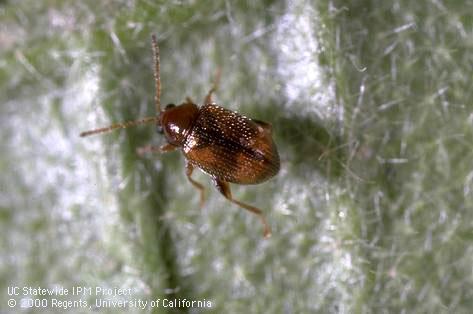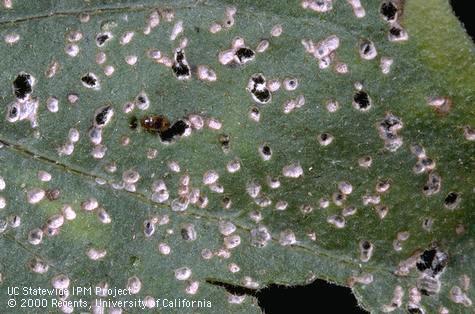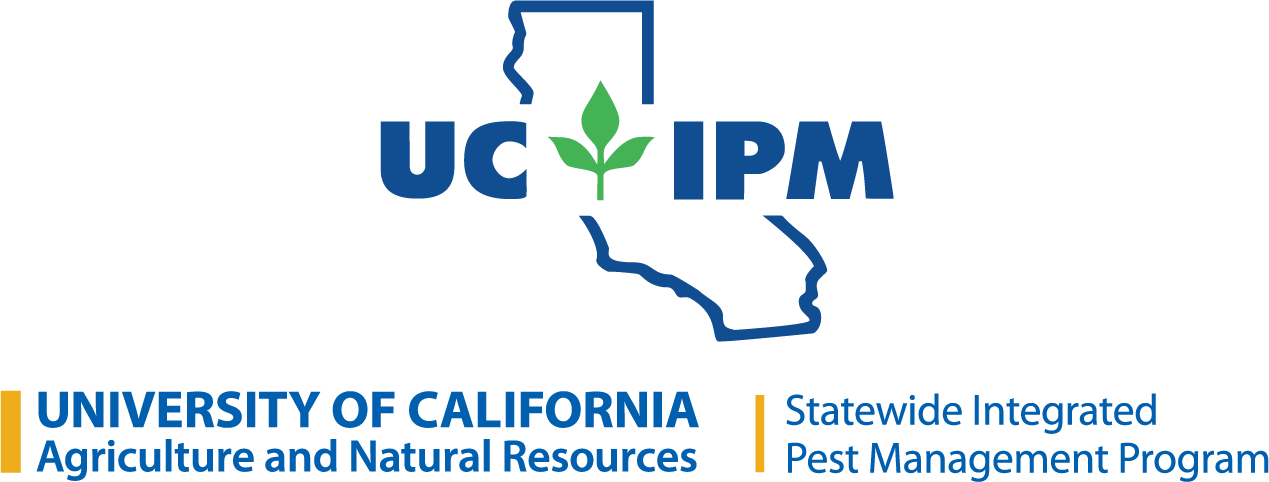Flea beetles are small, shiny beetles with black legs enlarged for jumping.
Identification
Their small size, enlarged back legs, characteristic shot-hole damage, and habit of jumping when disturbed make flea beetles easy to identify. There are numerous flea beetle species. The tobacco flea beetle, Epitrix hirtipennis, which is brown with black markings across its back, and the western potato flea beetle, E. subcrinita, which is shiny bronze or black, are widespread in the western U.S. The tuber flea beetle, E. tuberis, is found in Washington and Oregon. Other common flea beetles are the western black flea beetle, Phyllotreta pusilla, which is shiny black to dark olive green, and the western striped flea beetle, P. ramosa, which is black with a white or yellow curved stripe along each side of the back. All flea beetles are tiny, less than 1/10 inch long, and jump like fleas when disturbed.


Life Cycle
Adult flea beetles overwinter in weeds or debris and fly into potato-growing areas in spring. Flea beetles lay very small eggs in the soil around the plant, on the leaves, or in cavities hollowed out in the stems. The larvae are small, slender, white, and wormlike and usually attack the roots but may also feed on foliage. Depending on the species, they rarely cause significant damage except on potato tubers, where they create tunnels in the flesh of tubers. The larval stage may last up to a month. Flea beetles pupate in the soil. There are one or two generations a year.
Damage
Adults feed mostly on leaves, leaving tiny pits or small holes at their feeding sites. Flea beetles feeding together can cover leaves with bleached, pitted areas or ragged holes. Damage is not usually serious beyond early seedling stage. On carrots, larvae may cause sunken spots on roots. On eggplants and potato tubers, larvae feed on roots and stems and can create straight, narrow tunnels in tubers providing an entry for fungi. Small raised bumps may be on surface of tubers.

Solutions
Remove debris in the fall to remove any overwintering beetles. Seedlings can be protected with protective coverings until they are in the sixth leaf stage; older plants are less likely to suffer damage. Reflective mulches applied very soon after planting and before plants become infected can be helpful. White sticky traps can be used to monitor or trap adults. Insecticides should not normally be necessary and are not very effective when populations are high. Sulfur containing pesticides may be repellent. Often only a few outside rows will require treatment. Carbaryl sprays can provide some control where infestations are serious.
